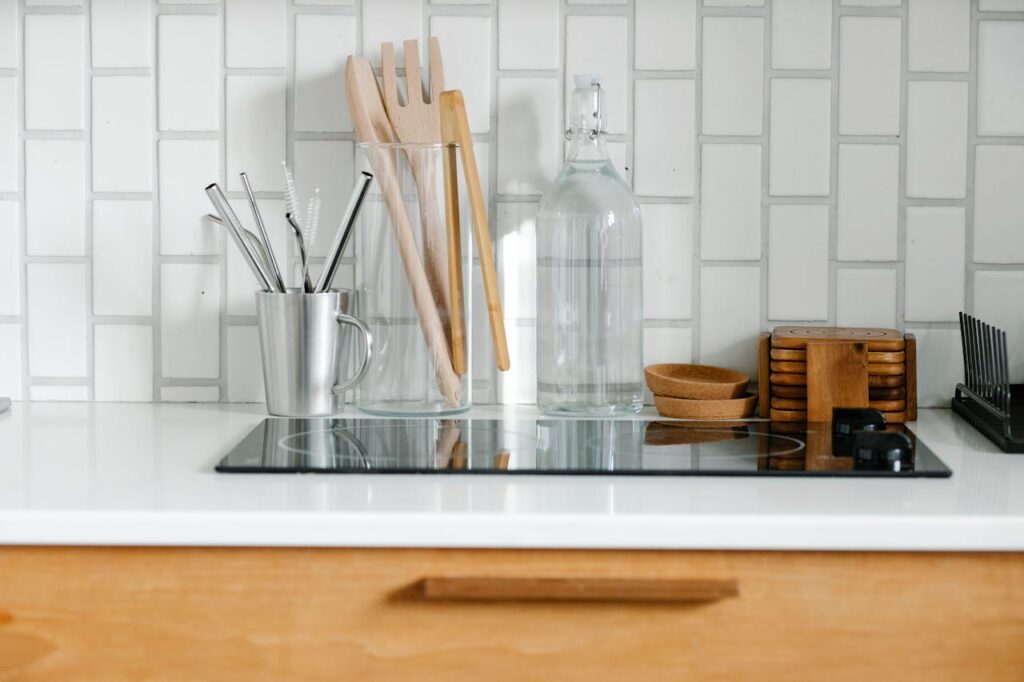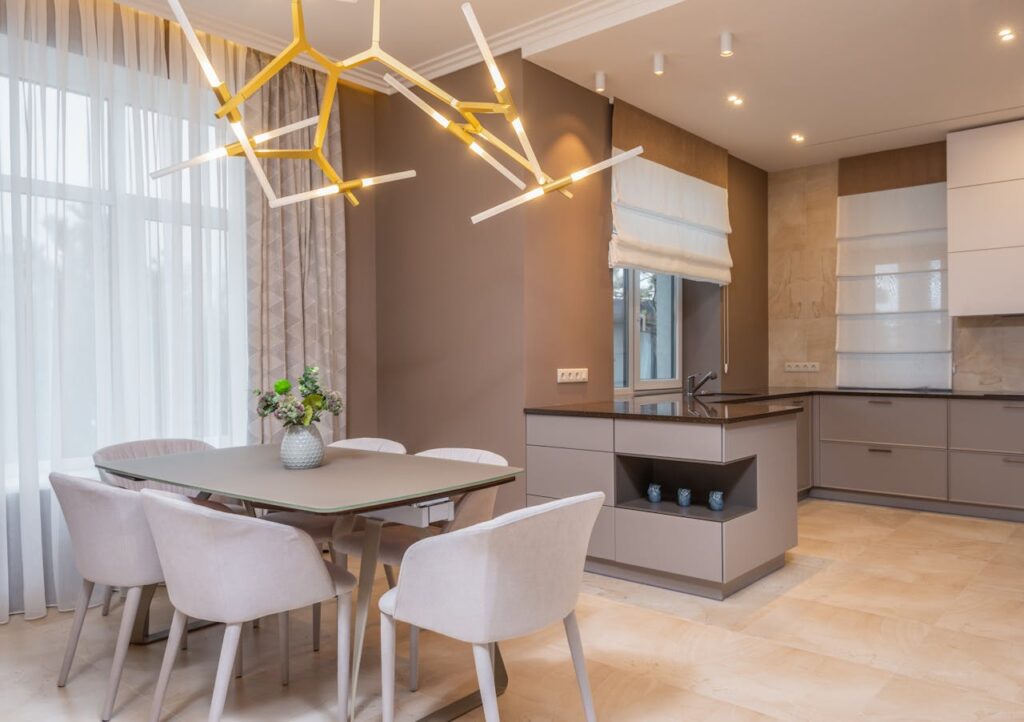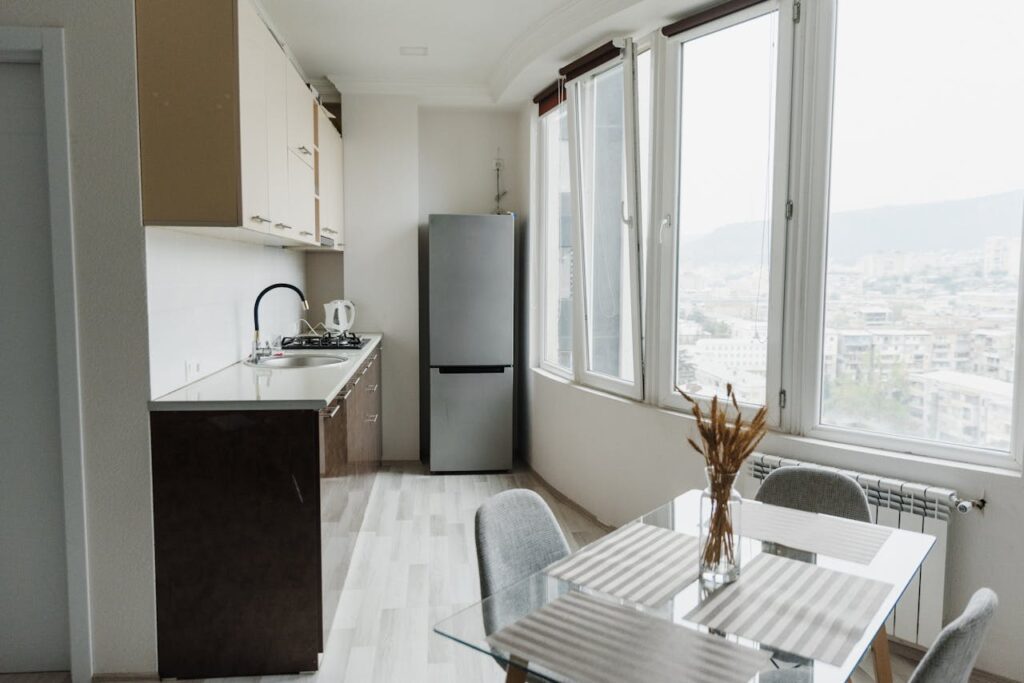Transforming a room or the entire home with minimalist design brings simplicity, functionality, and aesthetic appeal. More so with your kitchen, giving it an air of openness and clutter-free, making it easier to cook and clean. And we’ll provide some practical tips to help you achieve this goal. From choosing a neutral color palette to incorporating smart storage solutions, these strategies will guide you in creating a stylish and efficient space. Whether starting fresh in a new home or just remodeling your kitchen, these tips will help you transform your new kitchen with minimalist design that suits your lifestyle.
Declutter and Organize
Transforming your kitchen begins with decluttering and organizing. However, relocating presents the perfect opportunity to start fresh. It allows you to sort through your belongings and decide what is essential. Using this transition wisely, you can create a clean and organized space from the outset.
Moving as an Opportunity
Starting your minimalist kitchen project can be daunting, but moving into a new home in Virginia, for example, provides an ideal chance to begin with a clean slate. This state is celebrated for its beautiful blend of modern and historic homes, making it a prime location for those looking to embed themselves in an area with rich aesthetics. However, working with a trusted moving service like Helix Moving and Storage Northern Virginia is essential when relocating within this diverse region. They are a seasoned moving company specializing in navigating the unique landscape of Virginia and not only, offering services such as packing, moving, and storage. That is particularly helpful when trying to declutter and organize efficiently to complement Virginia’s notable environments. Utilizing their expertise can greatly simplify your move, allowing you to focus on embracing Virginia’s charm and implementing minimalist principles in your new home.
Unnecessary Items and Smart Storage Solutions
Before or during packing, you should begin by sorting through all your kitchen items. Discard duplicates and items you rarely use. That helps free up space and make your kitchen more functional. Consider donating or recycling items in good condition. Remember that this can still be applied to an existing space; it would just require a major “clean-up.”
Once that’s out of the way, use dividers and organizers in drawers and cabinets to keep items in order. It also makes finding what you need easier and maintaining a tidy space. Implement pull-out shelves and hidden storage to maximize your kitchen’s potential. Essentially, keep only vital items on your countertops. Store the rest in cabinets or pantry spaces. That reduces visual clutter and creates a more open and inviting kitchen. Maintaining a clean and efficient kitchen is easier when everything has a designated place.

Embrace a Neutral Color Palette
Choosing a neutral color palette is essential for a kitchen. Neutral colors create a calm, clean, and open atmosphere, making the space feel larger and more inviting. To effectively use these tones in your design, start with a base of whites, grays, and other neutral shades. These colors provide a timeless and versatile foundation for your kitchen. White cabinets, gray countertops, and neutral backsplashes can make the space brighter and more open.
Of course, introduce small pops of color or a trendy backsplash to add warmth and interest without overwhelming the space. Consider using a single accent color in small doses, such as on bar stools, small appliances, or a feature wall. This approach keeps the overall look clean and minimalist. In addition, neutral colors can make your kitchen appear larger and more spacious. Light colors reflect more light, enhancing the sense of openness. That is particularly beneficial for smaller kitchens or those with limited natural brightness. Opt for finishes like glossy or matte, depending on your preference for reflecting light.

Clean Lines and Simple Designs for a Kitchen with Minimalist Design
Adopting clean lines and simple designs is crucial for a kitchen with minimalist design. This approach helps create a clutter-free and functional space. For starters, select furniture and cabinets with these features. Avoid ornate or intricate designs that can make the space feel busy. Simple, flat-front kitchen cabinets and minimalist hardware contribute to a streamlined look.
Moreover, steer clear of detailed moldings, carvings, and embellishments. These can overwhelm your space and make it appear cluttered. Simplicity also makes it easier to maintain cleanliness and organization. Smooth surfaces are easier to keep free of dust and grime, enhancing both the aesthetics and functionality of your kitchen. Thus, you create a kitchen with both elegance and practicality.
Maximize Storage with Smart Solutions
Effective storage solutions are key to maintaining a minimalist kitchen. By maximizing storage, you keep your space organized and clutter-free. First, pull-out shelves in cabinets allow easy access to items stored at the back. That helps you use all available space efficiently and keeps your kitchen items well-organized. Second, maximize vertical space by installing shelves or hanging racks. This approach is perfect for storing pots, pans, and other frequently used items. It also keeps countertops clear and tidy. Third, incorporate hidden storage options like built-in drawers under cabinets or benches. These spaces are great for storing less frequently used items.
Last but not least, consider custom-built storage solutions tailored to your kitchen’s layout. Such cabinets, pull-out pantries, and corner units can make the most of every inch of space. These strategies help you keep your kitchen essentials easily accessible while preserving a clutter-free environment.

Incorporate Functional and Minimalist Decor
Decorating a minimalist kitchen involves choosing functional and aesthetically pleasing items. This approach ensures the space remains practical without sacrificing style. First, choose a few standout items that complement your minimalist theme. A simple, elegant vase or a sleek pendant light can add character without cluttering the space. Focus on quality over quantity to maintain a clean look.
Also of note, opt for decor that serves a purpose. Items like cutting boards, fruit bowls, and utensil holders can be decorative and useful. That reduces unnecessary items and keeps the kitchen organized. Consider the following examples of minimalist decor:
- A monochrome clock on the wall.
- Clear glass jars for storing dry goods.
- Stainless steel or wooden utensil holders.
Each of these items adds to the minimalist aesthetic while still providing functionality, aligning with the principles of such a design.
Final Thoughts
Transforming your kitchen involves decluttering, choosing neutral colors, using clean lines, maximizing storage, and incorporating functional decor. These steps help create a stylish and efficient kitchen. Not only does it enhance the aesthetic appeal of your home, but it also makes daily tasks more manageable. Focusing on simplicity and functionality can help you design a beautiful and practical space. Embrace these principles for a kitchen with minimalist design that truly stands out.

